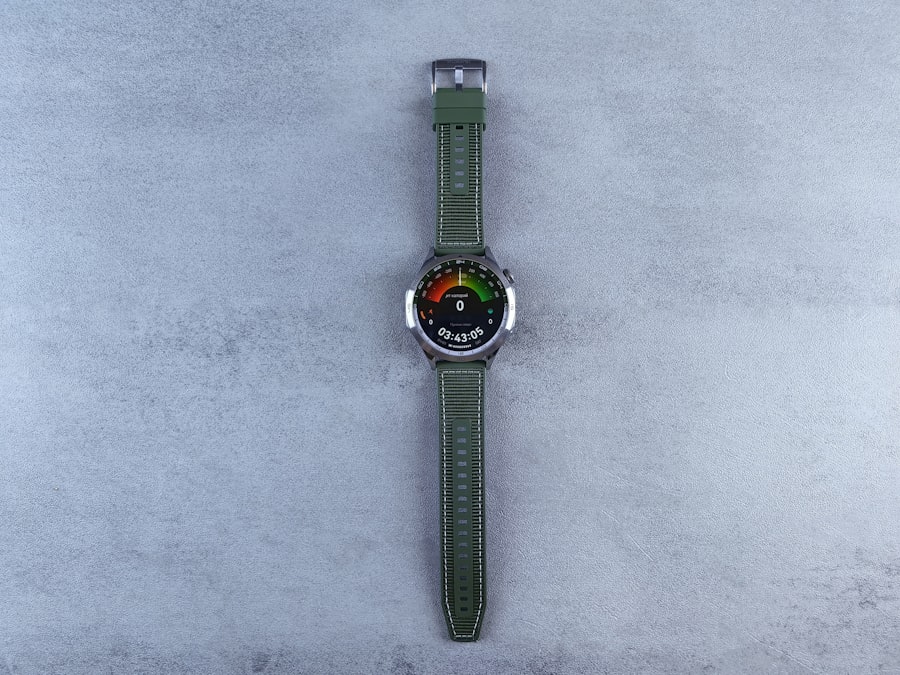Wearable technology has rapidly evolved from a niche market into a mainstream phenomenon, fundamentally altering how individuals interact with their environments and manage their daily activities. Initially, devices like fitness trackers and smartwatches were primarily designed for health monitoring, but their capabilities have expanded significantly. Today, wearable tech encompasses a wide range of devices that can track various metrics, from physical activity and heart rate to sleep patterns and even stress levels.
This evolution has paved the way for innovative applications in professional settings, where the integration of wearable technology can enhance productivity and well-being. The rise of wearable tech is closely linked to advancements in sensor technology, data analytics, and connectivity. Devices are now equipped with sophisticated sensors that can collect real-time data, which is then analyzed to provide insights into user behavior.
This capability is particularly valuable in the workplace, where understanding work habits can lead to improved efficiency and employee satisfaction. As organizations increasingly recognize the importance of employee wellness and productivity, wearable technology emerges as a powerful tool to monitor and enhance work habits.
Key Takeaways
- Wearable tech refers to devices that can be worn on the body to track and monitor various aspects of health and fitness.
- Wearable tech can monitor work habits by tracking factors such as activity levels, sleep patterns, and stress levels.
- Using wearable tech for work habits can lead to benefits such as increased productivity, better time management, and improved overall well-being.
- Examples of wearable tech for monitoring work habits include fitness trackers, smartwatches, and posture-correcting devices.
- Tips for using wearable tech to improve work habits include setting goals, tracking progress, and using the data to make positive changes in daily routines.
How Wearable Tech Can Monitor Work Habits
Wearable technology can monitor work habits through various means, primarily by collecting data on physical activity, posture, and even mental states. For instance, smartwatches and fitness trackers can track the number of steps taken during the day, the duration of sedentary periods, and the quality of sleep. This data can be invaluable for employees who may be spending long hours at their desks, as it highlights the need for movement and breaks throughout the workday.
By encouraging regular physical activity, wearable tech can help mitigate the adverse effects of prolonged sitting, which is often referred to as the “sitting disease.” Moreover, some advanced wearables are equipped with features that monitor stress levels through heart rate variability or skin temperature. By providing real-time feedback on stress levels, these devices can help employees identify when they are becoming overwhelmed or fatigued. This awareness allows individuals to take proactive steps to manage their stress, such as practicing mindfulness or taking short breaks to recharge.
The ability to monitor these aspects of work habits not only promotes individual well-being but also fosters a culture of health within organizations.
Benefits of Using Wearable Tech for Work Habits

The benefits of using wearable technology to monitor work habits are manifold. One of the most significant advantages is the promotion of a healthier lifestyle among employees.
This shift towards a more active lifestyle can lead to improved physical health outcomes, such as reduced risk of chronic diseases, enhanced cardiovascular health, and better overall fitness. In addition to physical health benefits, wearable tech can also contribute to improved mental well-being. By tracking stress levels and promoting mindfulness practices, these devices can help employees manage their mental health more effectively.
Organizations that prioritize employee well-being often see increased job satisfaction and lower turnover rates. Furthermore, when employees feel supported in their health journeys, they are more likely to be engaged and productive at work. This creates a positive feedback loop where healthier employees contribute to a more vibrant workplace culture.
Examples of Wearable Tech for Monitoring Work Habits
Several wearable devices have emerged as leaders in the market for monitoring work habits. The Fitbit series, for example, offers a range of fitness trackers and smartwatches that monitor physical activity, heart rate, sleep patterns, and even stress levels through guided breathing exercises. These devices provide users with comprehensive insights into their daily routines and encourage them to set personal goals for improvement.
Another notable example is the Apple Watch, which integrates seamlessly with various health apps to provide users with detailed analytics about their activity levels and overall health. The Apple Watch also includes features like reminders to stand up after prolonged sitting periods and notifications for mindfulness exercises. These functionalities make it an effective tool for promoting healthier work habits among employees.
Additionally, companies like WHOOP have developed specialized wearables designed for performance optimization. The WHOOP strap tracks heart rate variability, sleep quality, and recovery metrics, providing users with personalized insights into their physical readiness for work or exercise. Such data-driven approaches empower employees to make informed decisions about their work habits based on their physiological responses.
Tips for Using Wearable Tech to Improve Work Habits
To maximize the benefits of wearable technology in improving work habits, individuals should adopt a strategic approach to its use. First and foremost, setting clear goals is essential. Whether it’s aiming for a specific number of steps per day or committing to regular breaks for stretching or mindfulness exercises, having defined objectives can help users stay motivated and accountable.
Another important tip is to regularly review the data collected by wearable devices. Many wearables come with companion apps that provide detailed analytics and trends over time. By analyzing this data, users can identify patterns in their behavior that may need adjustment.
For instance, if an employee notices that they consistently have high stress levels during certain times of the day, they can take proactive measures to address this issue by scheduling breaks or practicing relaxation techniques during those periods. Additionally, integrating social features can enhance motivation. Many wearable devices allow users to connect with friends or colleagues for challenges or competitions.
This social aspect can foster a sense of community and accountability among coworkers, encouraging everyone to adopt healthier work habits together.
Potential Drawbacks of Using Wearable Tech for Work Habits

Despite the numerous advantages of wearable technology in monitoring work habits, there are potential drawbacks that organizations and individuals should consider. One significant concern is privacy. Wearable devices collect vast amounts of personal data, which raises questions about how this information is stored, used, and shared.
Employees may feel uncomfortable with their employers having access to sensitive health data, leading to potential trust issues within the workplace. Another drawback is the risk of over-reliance on technology. While wearables can provide valuable insights into work habits, they should not replace fundamental self-awareness or personal responsibility for health and productivity.
Employees may become overly focused on metrics rather than listening to their bodies or recognizing when they need a break or a change in routine. This fixation on data can lead to anxiety or stress rather than alleviating it. Furthermore, there is the potential for technological fatigue.
As employees are bombarded with notifications from various devices throughout the day—emails, messages, reminders from wearables—there is a risk that they may become desensitized to these alerts. This could diminish the effectiveness of wearables in promoting positive behavior changes if users begin to ignore or dismiss important notifications.
Integrating Wearable Tech into Workplace Wellness Programs
Integrating wearable technology into workplace wellness programs can significantly enhance their effectiveness by providing measurable data on employee health and engagement levels. Organizations looking to implement such programs should start by selecting appropriate devices that align with their wellness goals and employee preferences. Offering a range of options allows employees to choose wearables that best suit their lifestyles and needs.
Once devices are selected, organizations should focus on creating an inclusive culture around wellness initiatives. This includes providing training sessions on how to use wearables effectively and interpret the data they generate. Encouraging open discussions about health goals and challenges can foster a supportive environment where employees feel comfortable sharing their experiences and seeking advice from colleagues.
Moreover, organizations should consider incorporating gamification elements into their wellness programs by leveraging the competitive features of many wearable devices. Setting up team challenges or individual competitions can motivate employees to engage more actively with their wearables while promoting camaraderie among coworkers. Recognizing achievements—whether through rewards or public acknowledgment—can further incentivize participation in wellness initiatives.
Future Trends in Wearable Tech for Monitoring and Improving Work Habits
As technology continues to advance at a rapid pace, the future of wearable tech in monitoring and improving work habits looks promising. One emerging trend is the integration of artificial intelligence (AI) into wearable devices.
For instance, AI could suggest optimal times for breaks based on an employee’s activity patterns or stress levels. Another trend is the development of more sophisticated biometric sensors that can monitor additional health metrics beyond physical activity and heart rate. Future wearables may include sensors capable of tracking blood glucose levels or hydration status in real-time, providing users with comprehensive insights into their overall health and well-being.
Moreover, as remote work becomes increasingly prevalent, wearable technology will likely adapt to support virtual collaboration and productivity monitoring. Devices may incorporate features that facilitate communication among remote teams while also tracking individual performance metrics in real-time. In conclusion, wearable technology holds immense potential for transforming how we monitor and improve work habits in professional settings.
By leveraging these tools effectively while being mindful of privacy concerns and potential drawbacks, organizations can create healthier workplaces that prioritize employee well-being and productivity.
In the realm of enhancing productivity and efficiency, wearable technology has emerged as a pivotal tool for monitoring and improving work habits. A related article that delves into the technological advancements in business tools is The Best Tablets for Business in 2023. This article explores how modern tablets can complement wearable tech by providing seamless integration and enhanced functionality for professionals on the go. By leveraging both wearable devices and advanced tablets, individuals and businesses can create a more connected and efficient work environment.
FAQs
What is wearable tech?
Wearable tech refers to electronic devices that can be worn on the body, such as smartwatches, fitness trackers, and other devices that can monitor various aspects of a person’s health and activity.
How can wearable tech be used to monitor work habits?
Wearable tech can track metrics such as activity levels, heart rate, and sleep patterns, which can provide insights into a person’s work habits. For example, it can show how much time is spent sitting at a desk, how active someone is during the workday, and how well they are sleeping, all of which can impact work performance.
What are the benefits of using wearable tech to monitor work habits?
Using wearable tech to monitor work habits can help individuals become more aware of their behaviors and make positive changes to improve their overall health and productivity. It can also provide employers with valuable data to create a healthier and more productive work environment.
Are there any privacy concerns with using wearable tech in the workplace?
There are potential privacy concerns with using wearable tech in the workplace, as it involves collecting and storing personal data. It’s important for employers to have clear policies in place regarding the use of wearable tech and to ensure that employees’ privacy is protected.
How can wearable tech be used to improve work habits?
Wearable tech can be used to set goals for physical activity, remind individuals to take breaks, and provide feedback on sleep quality. By using this data, individuals can make informed decisions to improve their work habits and overall well-being.

